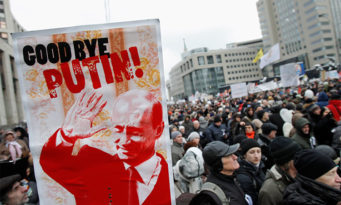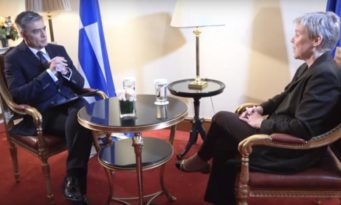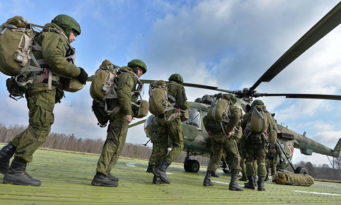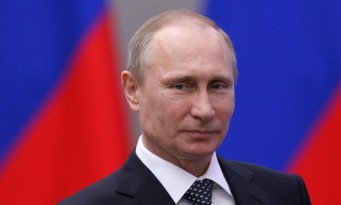OSCE: Donbass would be a much darker place if not for our monitors
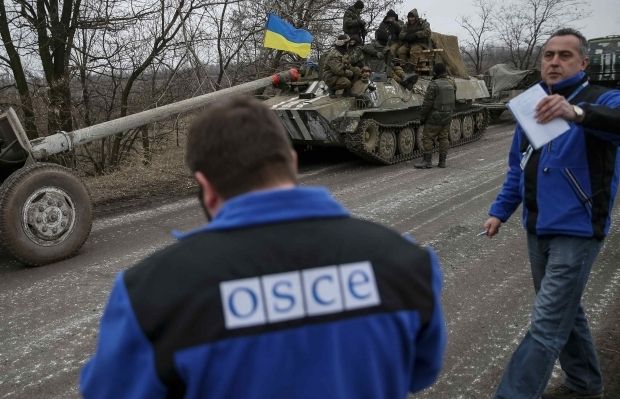
- By defencematters
The sides fighting in Eastern Ukraine have proven that they can immediately halt hostilities if there is the will, but there are all the preconditions for the war to drag on for a long time if the will is not there, Deputy Chief Monitor of the OSCE Special Monitoring Mission to Ukraine, Alexander Hug says.
The sides fighting in Eastern Ukraine have proven that they can immediately halt hostilities if there is the will, but there are all the preconditions for the war to drag on for a long time if the will is not there, Deputy Chief Monitor of the OSCE Special Monitoring Mission to Ukraine, Alexander Hug says in an interview with LETA and Defence Matters. He also speaks about the risks and challenges the monitors are faced with on a daily basis, and emphasizes that the presence of the monitors is crucial to the war-torn country as Donbass would have been a far darker place if not for the monitors.
By Guntars Grinums
First of all, what is the status of your mission within the OSCE?
I am not representing the whole organization; I am representing one field operation – the Special Monitoring Mission (SMM) to Ukraine which is an instrument of the Permanent Council. The OSCE has other instruments, including the High Commissioner on National Minorities, the Representative on the Freedom of the Media and the Office for Democratic Institutions and Human Rights; all of them have activities in Ukraine.
The Special Monitoring Mission’s task is to monitor and report, and to facilitate dialogue – these are the two core tasks which all 57 participating States of the OSCE have given to it and have extended its mandate to March 2018. At the moment, there are approximately 600 monitors on the ground, plus some 380 Ukrainian colleagues and other international staff, bringing our staff number to over 1,000. Most of them are based in the eastern part of the country on both sides of the contact line. So we have teams in Donetsk, in Luhansk city, as well in Mariupol, Kramatorsk and even closer to the contact line, in Svitlodarsk, for instance. They monitor the situation, including the security situation and the adherence of the sides to the agreements on a daily basis
How much are the sides adhering to these agreements?
The big issue is that the sides, despite the fact that they have agreed to certain measures, for instance, to move heavy weapons back from the line to certain areas where they cannot any longer engage, or to demine areas, have not done so or have only partially done so, or in a way that we cannot verify. The question rather should be not what the OSCE is doing, but what the sides are doing in terms of fulfilling their commitments. We provide them with objective information, which they can read every day, showing whether they are in compliance or not. But our task is not to move guns; it is the task of the sides to do that. We will document whether they do so or not, and will document so publicly - six days a week in Ukrainian, Russian and in English.
Because the sides are not doing what they have promised to do, civilians continue to suffer in this conflict. And it is for them that the sides now need to start doing the very basic of measures – that is to disengage where they are too close. They also need to remove heavy weapons beyond lines where they can no longer use them, as only this year alone we have corroborated over 400 civilian casualties. It is for civilians that sides must start implementing basics measures. That is to disengage, where they are too close – the first important measure. And in parallel – they need to remove the heavy weapons beyond lines where they cannot any longer use them. We stand ready to verify these measures but it depends on decisions to implement these measures which have been agreed upon a long time ago, in fact, some of them over three years ago, in September 2014.
How free is the movement of OSCE monitors? Are some of the sides presenting obstacles, not letting them access to certain areas?
The OSCE SMM mandate states that it should have safe and secure access; all 57 states have agreed to that. Moreover, the Minsk agreement also gives specific responsibilities to the sides to assist in ensuring our safety and security. So, once again, if we can’t move, if we have been stopped, it is not just a disregard of our mandate and a disregard of the Permanent Council, but also a disregard and a violation of the agreements they themselves have reached. We are stopped many times because of ongoing fighting, because there is a risk to be caught in indirect fire. We are stopped by minefields in the ground and by unexploded ordnance or other obstacles that make it impossible for us to move forward. We are also stopped directly by armed men, at gunpoint, not allowing us to go further.
Moreover, the technology that we deploy is frequently interfered with – electronically through jamming our unmanned aerial vehicles (UAV) that we use, or through shooting down our cameras of which we have installed many along the contact line. This technology is only being used because the sides are not allowing our monitors to operate and they have not removed those security risks they have agreed to do so as part of the Minsk agreements. They have agreed in the Memorandum in 2014, in article 6, that they would remove any mine that they have laid and would not lay any new ones. If they did what they have promised to do, a lot of our problems would be gone. The question again is what are the sides doing to enable the mission to be of assistance to them in implementing their promises.
Are both sides equal in putting in place such obstacles?
We have to make a distinction between these static obstacles like minefields, barriers, unexploded ordnance – both sides do that almost on equal terms. And we find it everywhere. And the longer the conflict lasts the more there are. But the direct interference, when people stop us at gunpoint or don’t let us go further, and where more aggressive, more intimidating incidents happen, in the vast majority take place in the areas not controlled by the Government.
Has the SMM experienced violence against its representatives?
At the very beginning of our mission our colleagues were taken hostage. Eight of them were kidnapped, kept for a month and since then we have had shorter or longer detentions at checkpoints where people have been held for hours and hours.
There were incidents when there was direct fire on our patrols, but the biggest risks when most of the incidents happen are the minefields or the indirect fire when patrols happen to be in the middle of the fighting, in the crossfire. This is very difficult to control, because if there is a direct threat, you know where it is coming from but a mine or indirect fire just appears suddenly and you cannot really prepare for it properly.
In all of these cases, we report publicly and we directly speak to the sides to make sure that it does not happen. These interferences continue but by now we have a sufficiently strong reporting mechanism that allows us to directly address these issues to the sides, as well as to all of the participating States who, of course, are the primary addressees of our reports.
How dangerous is the work of an SMM member?
This year we have lost one colleague, and two others were injured, in a mine explosion in Luhansk region. And we have had some other difficult incidents.
There are high risks. One risk is to be caught in indirect fire when the fighting starts. The second is the mines and unexploded ordnance, and the third is direct fire when we are being targeted specifically and directly. We equip ourselves accordingly and many times our armed vehicles have protected us from being injured. People also must wear their personal protection equipment at all times in certain parts of Luhansk and Donetsk regions. They are also restricted in terms of what they can do after working hours in their private lives. They get trained by the mission before they come and while in the mission.
Of course, the mission constantly reassesses the situation on the ground. But security is the top priority in this mission because it is the monitors along the contact line that are the most important asset of the mission. That is why we focus on their security. But their security is determined by the sides; not by us. We can mitigate to a certain degree but there is always a level you cannot prepare for.
There have been reports about some examples of lack of loyalty to the mission’s ideals from some of the members of the SMM. Are those stories true?
Any international staff member that works for us has to sign a code of conduct when they start the mission, regardless of where they come from. They operate in Ukraine as an OSCE staff member; not a representative of their own state. And even ID cards do not say where they are from. They do not to represent their own opinion. They represent the organization and the mandate. If anyone violates this, there are measures the organization can take to sanction this and to discipline the staff. Of course, in extreme cases, staff not complying with this are separated from the mission.
The work our monitors do is not easy; they are exposed to daily violence, death and injury. We are not a humanitarian organization, so they can’t help directly; they can’t bring food if they see that people are hungry; they can’t bring medicine; they can’t repair the infrastructure. They bring that information to others that can help and then through the dialogue function I mentioned before they can prepare the ground for this humanitarian aid to be delivered or that repairs can take place. Of course, this is a stressful environment and a lot of these monitors have not had or have only limited exposure to similar situations. It is difficult for them to work and for that reason we also have a robust support system – a backbone for our staff in order for them not just to deal with the physical stress of working and patrolling in the heat and the cold, but also of the psychological effects of such work.
Is the sudden Russian support for a peacekeeping force a real opportunity to stop the conflict?
I am sure the Security Council in New York will consider this carefully, but one thing has to be very clear – the sides have already signed various documents where they have agreed on measures. No matter how many monitors one is putting in place, no matter what additional tools come into place, it should not distract from the fact that they have clearly defined obligations.
The OSCE has over the past 3.5 years gained considerable experience and we will be sharing it with any initiative which will bring even more stability than now exists, and any such initiative, of course, would be welcome. But the mission will continue to implement its mandate until the Permanent Council of the OSCE decides otherwise.
Is the SMM’s presence a deciding factor to influence the actions of the sides? Is this presence respected by them?
It is difficult to prove that we have a deterrence effect. But we know, for instance, if we are stopped it is because they do not want us to see what is going on. That in effect shows that they are aware and do not want us to expose their violations. They know that if we are there we will report weapons violations or positions moving. Over many years now we have seen that where we are present, or our technology is present, there is a lower level of violence. That has a limit – if tensions are very high and there are intense exchanges of fire then our presence does not make much difference. But we are not there for deterrence; it is up to the sides to stop the fighting. We have no mandate to take away guns or move them back behind positions. Our mandate is to document whether they do what they have promised to do.
But we are also there to provide you and all Ukrainians on either side of the contact line, and the world community, objective information. There is no one else that provides it. Even if we just see the tip of the iceberg. If you imagine the region without this tool on the ground then we would not know what is going on and that would fuel more tension. I am convinced that Donbas would be a much darker place without the SMM present.
Can you see any solution to this conflict, a solution that would be suitable for both Ukraine and Russia?
Let’s focus again on the contact line, the facts. We know and have documented it for years that the sides can stop the fighting if they want to. For example, this year, when they recommitted just before September 1, when school started, to hold fire, we had violations in the three- or four- digit numbers every day and it dropped overnight to two digit numbers or even lower. It was eerily quiet all along the contact line. It shows that there is no command and control problem on either side. It is a question of will. I am positive that if that will materializes - and difficult decisions are made - then it is possible to end it. As long as these decisions are not made and as long as this will does not crystalize, this will continue. All the ingredients are there for a long continuation of this conflict and for even worse to come, if these measures are not implemented. It is a question of will, not of whether or not it is going to happen. It can happen, it can happen very quickly and we have seen and documented it that they are fully capable of doing so.
Are local inhabitants capable of influencing both sides in a way to stop the war?
There have been over 400 civilian casualties, many killed, this year; almost 20% more than last year. These are the casualties that we have corroborated – there might be many more that we haven’t been able to verify in the morgues or hospitals or at their homes. Their property is destroyed, their lives are torn apart because they can’t go to school across the line, they can’t go to work, they don’t see their friends that often because they can’t cross the line. But all Ukrainians that I have met on both sides of the line are very resilient. They know that this conflict can end because it is not their conflict.
The contact line that exists as a tragic reality on the ground does not exist in their minds. Up to 30,000 Ukrainians cross this line every day – this is something you do not see in other conflicts. We see thousands of cars queuing up, people standing in the heat or cold, people even die when they wait; also because it is mine infested: they lose patience and around and then drive over mines or unexploded ordnance and then get injured or killed. People here don’t accept this line. That is the reality; in their minds there is no line. I think that is the positive aspect because it shows that the people do not broadly support this conflict. They all want it to end; they are fed up with it. There are places along the contact line that have not seen a single day without shelling.
What would you highlight are the most important matters at the moment?
I would like to underline the humanitarian aspect of this conflict. There is a lot of talk about Minsk, the OSCE, the sides, tanks and heavy weapons, but there is very little discussion about how much the people suffer from this conflict. Millions have been displaced by this conflict. Many people killed, a lot of the infrastructure destroyed, people often are without electricity - and that means they can’t charge their phones, they can’t communicate or call for help, they can’t watch TV to know what is going on and they can’t store food as the fridge doesn’t work. People often have no water and that is a problem not just in summer but also in the winter when they do not have heat. Gas flow is often interrupted. There are towns which have been without heating for two winters which is harsh in Ukraine. Not because it is impossible to repair; it is because they do not stop the fighting in the area. And they know that 10,000 people are freezing, but they don’t stop. That human aspect of this conflict is very important. This is the reason why they should stop. Forget the agendas. Everyone that is involved should agree that the suffering of the people should be ended. And any other question can come later – people should not be exposed to this violence which is now lasting for almost four years.







